 Written by ContentPowered.com
Written by ContentPowered.com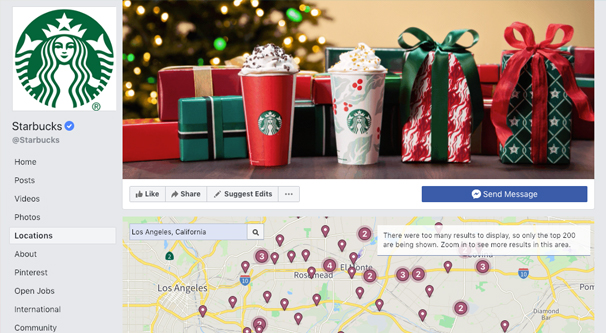
There are five different ways you can use Facebook Pages as a business that has multiple locations. Each method depends on what you want to get out of Facebook. I’m going to discuss all five methods, and the situations in which you might want to use them.
Method 1: Unified Page
The first method is to basically ignore the fact that you have a bunch of different locations for your business. You can create one central page with all of the information for your brand, and run it as a unified whole for a brand page. It carries all of your corporate messaging, all of your global ad campaigns, and virtually nothing for local branches of your business.
It’s difficult locating many example businesses that have chosen to take this approach. The primary example would actually be global brands that don’t have individual stores. For example, Moz – the SEO and marketing data analysis company – doesn’t have a physical location, since they’re entirely an online brand. You can go to their Facebook page, but you won’t see anything about locations on their page.
If you’re a brand with multiple locations, you can still take the unified page approach, but you actually gain several benefits from skipping down to method 2 below. The fact is, almost every large national brand I can find goes with method 2, so it’s worth looking at.
Method 2: Page with Locations
Facebook decided some time ago that page bloat was getting a little bit too much. Too many businesses were attempting to maximize their web presence by creating pages for every individual branch of their business. For something like Staples, the office supply brand, that means well over 1,000 different pages. Facebook doesn’t think that’s a good idea, so they introduced the Locations feature.
To continue using Staples as an example, a look at their store location directory indicates that they have 1,140 stores across the United States. Do a search on Facebook and you’ll only find two pages, though: one for the office supply brand, and one for a Canadian brand that isn’t a related company.
Go to the Staples Facebook page, however, and you’ll see a “locations” entry in the left-hand sidebar. Click on that and you’re taken to this page, which has an embedded map and markers for every location of every Staples branch throughout the USA.
This isn’t necessarily the best solution for getting a global picture of a brand, because Facebook’s map imposes some limitations. If you zoom out, you’ll see a box that says “there were too many results to display, so only the top 200 are being shown.” You can zoom in until you have a full picture of an area, but the further out you are, the more is being skipped over.
There are a lot of benefits to using this method. The first and best benefit is keeping all of your pages under one roof. You have one unified source of corporate messaging, and you don’t have to rely on however many different branches exist to post their messaging at the same time. Can you imagine if Staples needed to have one person at every branch responsible for keeping their Facebook page up to date? It would be a huge, inconsistent mess.
Additionally, this helps prevent scrapers, copycats, and phishing pages. Facebook will verify the main page for a brand like Staples, but they won’t verify each individual branch page. This means they are very open and vulnerable to being phished. I could create a copycat page for a brand in a location, to convince people the store exists, and follow that to whatever nefarious ends I have in mind.
Using the Locations feature comes with built-in Facebook tools to manage your locations, which allows you to add and edit the addresses for each branch, their store hours, and information about those branches. You can even specify the average size of the audience each branch serves, the distance around the branch it serves, and more. This is important, because when a user browses Facebook, they are automatically zoomed in to their location. They will see the branches nearby and will be able to choose which one best suits their needs, but only if you have them set to display in a broad enough area.
There’s also the ability to run “store visit” ads. Using the Facebook ads system, as long as your Page has locations enabled, you will be able to run ads with the aim of driving foot traffic to your branches. Facebook will be able to use user location and check-in data to track the visits to each branch based on those ads.
They even make it convenient to add business locations in bulk. When using the Facebook business manager, you can upload a list of all of your locations via an Excel, CSV, or UTF-16 spreadsheet format. They even offer you a template! You can read all of Facebook’s sales pitch for locations here.
In the past, you needed to request access to the locations feature, while Facebook tested it and gradually rolled it out to a larger audience. It is now available to everyone, so you don’t need to request access. All you need to do is visit the business manager and hit up the location manager. If you aren’t able to select your page in the drop-down in the corner, you will probably need to change the specific category for your business and add in some physical locations to get it started. You can read more about that here.
Method 3: Individual Pages
The third method is also the old method, wherein a business creates individual pages for each branch or region they serve. Goodwill Industries is one example of this. There’s one main Goodwill Industries page, which is verified. However, when you do a search in Facebook for Goodwill, you can find a wide variety of different pages.
Taking Michigan for an example location, I can see Goodwill Industries of Mid Michigan, Goodwill Industries of West Michigan, Goodwill Industries of Greater Grand Rapids, Goodwill Northern Michigan, Goodwill Industries of Southwestern Michigan, Goodwill Industries of Michiana, Goodwill Industries of Greater Detroit, and on and on. Some of these are verified pages, some of them are not. They all have variations on the same logo and information, but are aimed at serving their specific location.
As a potential customer of the thrift charity, this can be pretty confusing. Which one of these serves me, as a hypothetical resident of the state capital? It’s southern Michigan, but is it southeast or southwest? What’s a Michiana? Which of these pages should I follow if I want to be kept aware of the various sales and promotions going on in my local branches?
These questions are why Facebook added the locations feature in the first place. That, and because each individual page seems to have only a few thousand followers, whereas the primary Goodwill page has nearly 200,000. I imagine there is some overlap, but how much higher would the primary page be if all of those secondary pages were rolled into one?
When the locations feature exists, why would you use individual pages? To me, there’s one or two good reasons. The first is when each individual location is given some measure of autonomy for their branding and advertising. If each location has its own advertising budget, letting regional ad managers handle the promotion is better than trying to impose corporate-level rules that might not work.
The other reason is franchises. This is how it works for most small chain restaurants, for example. Franchises are individually owned and operated, run off a guidebook and starter pack of resources provided by the franchise itself. The corporation might not want to manage all of these individual franchises, so it will leave each of them to create or not create their own pages.
Method 4: Individual Pages Plus Locations
Alright, so I wasn’t being quite up front with the previous section. Goodwill also has their primary central page with locations added to it. You can see the location map here.
This is common amongst the more fragmented franchises like Goodwill, where they may have had a lot of individual pages or regional pages before Facebook rolled out the Locations feature to everyone. These companies rarely fully consolidate their Facebook presence.
It’s a hard decision, right? These local branches often stir up their own local loyalties and trends, and the individual customers might have built relationships with the social media managers in their regions. The corporation doesn’t want to cut those off, but they’re losing a lot of potential with ads and followers by keeping their presence so fragmented.
I personally feel like using the locations system is the way to go. There may be some upheaval in the transition from individual pages to locations, but it will end up better for the brand as a whole by the time it settles down. Unfortunately, it will likely be a lot of work getting those individual social media managers to step down, and some of them will probably fight it. The harsh reality is that some of them are only keeping their jobs because they’re the only ones who know how to operate social media, so the move is likely to get some people fired. It’s just something that needs to be dealt with.
Method 5: Pages for Categories
The fifth possibility is to use individual pages, but not for locations. Target, that global retail outlet, is one such brand. When you search Target on Facebook, you’ll see locations near you, and the main Target page here, with their locations map here. You’ll also see something odd. Target Baby, another brand owned by Target, has its own massive global verified page.
What’s going on here? For some reason, Target has split up their Baby department and spun it off into its own page. Baby stuff is still marketed in their main page, but they have this specific page to market directly to new parents.
It’s kind of brilliant, in its way. New parents are a high specialized audience with a lot of money to spend, but their desires are often niche enough that other possible customers don’t want to be flooded with baby content. Spinning off a Baby page means they can capture the best of both audiences.
The main Target page has a locations section with all of their individual locations, but the Baby page does not have locations added. Even its information, like the website link, points back to the main Target website.
Target also has a few additional Pages, though they aren’t verified. You have the Target Careers page and the Cartwheel App as pages of their own, for example. This allows those individual sections to be spun off as well.
Target also has individual franchise pages, but they’re harder to find because they’re very small. For example, the Target location in Las Vegas only has 150 people following it. It’s active, it still gets the occasional review and it still posts the same branding and content as the main page, but it’s very small. Other Las Vegas locations have 97 and 235 page likes, respectively.
Now here’s the interesting bit: this is actually an artifact of how the Locations system works. People can “like” their local regional Page, and it will be a like for that page, but it’s also a like for the primary page. Click on one of the posts on a regional Target page and you’ll be taken to that post in the main Target page.
This is because each individual franchise page is actually a sub-page of the main Target page. This is in contrast to the way Goodwill runs theirs; the Goodwill pages were individually created. The Target pages are all operated simultaneously from the central corporate page.
Of course, at the end of the day, the method you choose depends on what you want to get out of Facebook and how you want to manage your franchises. If you want autonomy and independence, let your individual owners run their own pages. If you want complete brand control, run them from a central location. It’s entirely up to you.
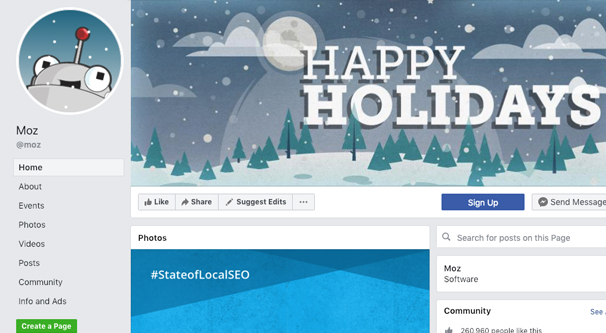
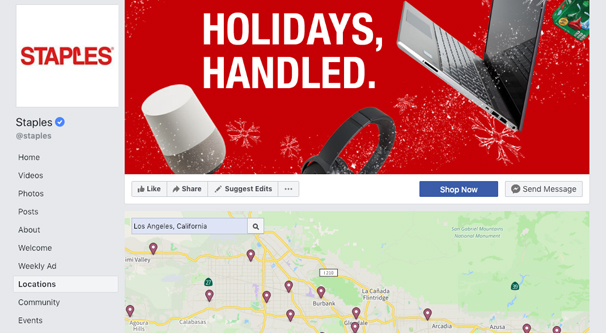

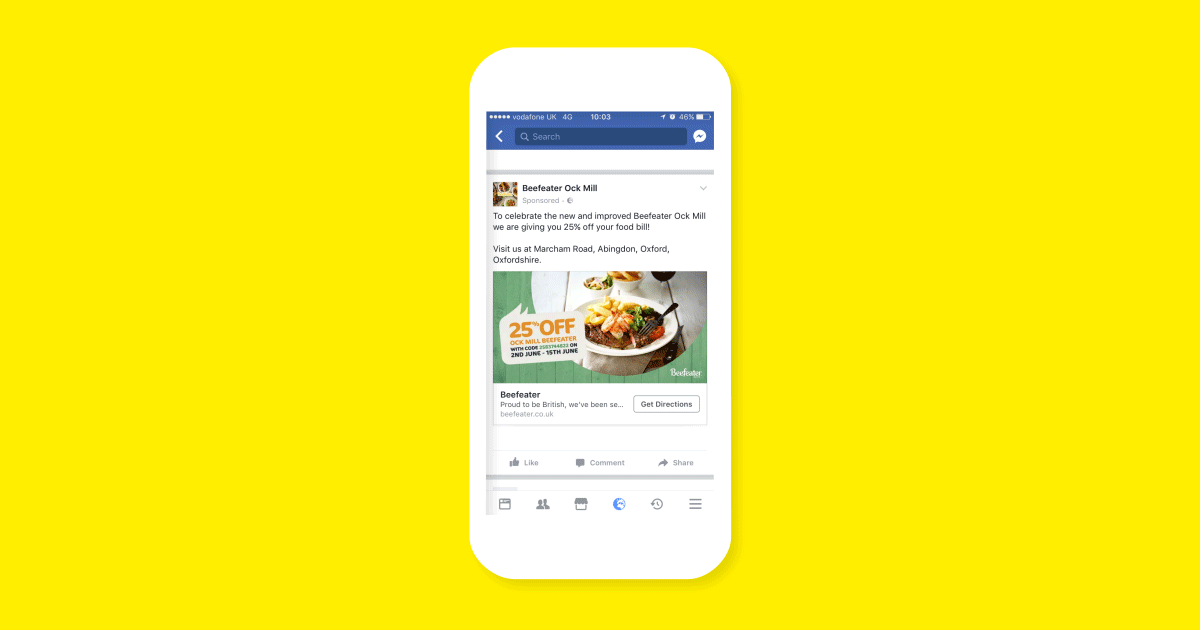



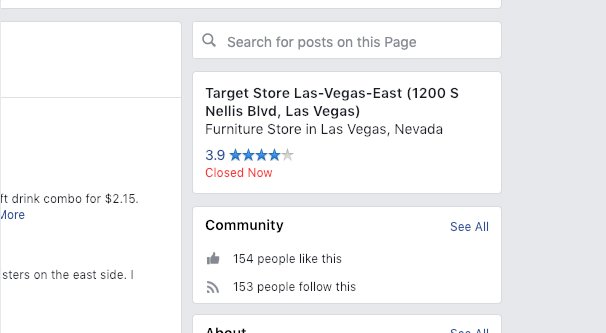
Great Article, good to see facebook getting in on the act in this area. we have a business page that we would like to add Locations to, can we test a couple of locations then turn them off if not what we need without any implications to our brand page?
Hi Marcus! Yes, you can make changes to your page at any time, so it’s worth trying out to see how it works for you. For businesses with a dozen or fewer locations, I believe having a single social media presence is more beneficial than having many different pages for each location.
Is there a way to share a direct link/url to the Locations tab?